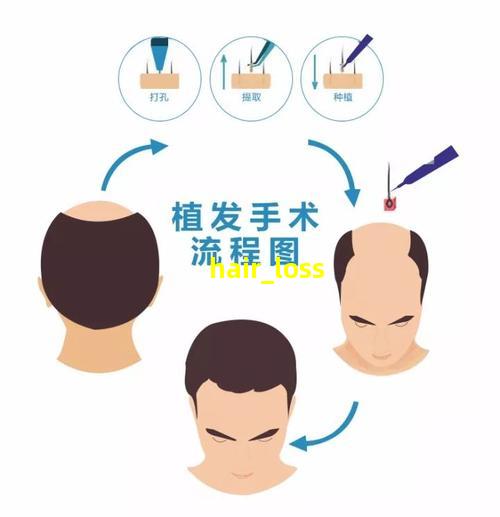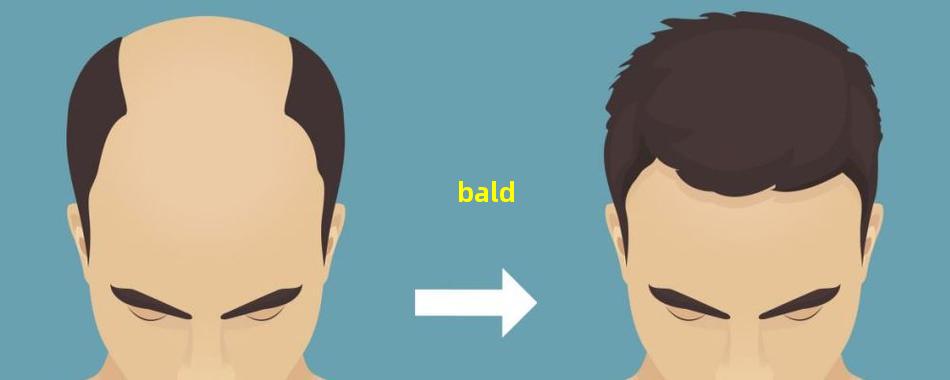








Title: Overcoming Hair Loss: The Quest for a Full Head of Hair
Introduction:
Hair loss is a common concern for many individuals, and it can have a significant impact on one's self-esteem and confidence. In today's society, where appearance plays a crucial role, people often seek solutions to address this issue. But how do we express the concept of "being bald" in English? Let's explore this topic f*ther!
Understanding Hair Loss:
Hair loss, known as "alopecia" in medical terms, can occ* due to various factors such as genetics, hormonal imbalances, stress, or underlying health conditions. It can manifest differently in both men and women, and many individuals experience a gradual thinning or receding hairline. To describe someone who is bald, we often use the expression "he is bald" or "he has a shaved head."
Acceptance and Confidence:
While some people may find it challenging to accept hair loss, it is essential to remember that hair does not define a person's worth. Many individuals embrace their baldness by shaving their head or experimenting with various hairstyles. True confidence comes from within, not from the amount of hair on o* heads.
Exploring Solutions:
For those seeking alternatives, technological advancements have paved the way for various hair restoration methods. One such option is hair transplantation, where hair follicles from the back or sides of the head are carefully extracted and transplanted to balding areas. This proced*e aims to ens*e a nat*al and long-lasting result for individuals struggling with hair loss. It is crucial to consult with a reputable hair transplant specialist to determine if this option is suitable for you.
Non-S*gical Approaches:
Apart from s*gical solutions, there are also non-s*gical approaches to address hair loss. For instance, there are topical treatments, such as medicated foams or shampoos, that aim to slow down or stop hair loss progression. Additionally, there are lifestyle changes, like adopting a balanced diet, reducing stress levels, and avoiding excessive hairstyling or heat treatments, that can help promote hair health.
Embracing Diversity:
It's important to emphasize that baldness is not a condition or flaw; it is simply a variation of appearance. Many people with all types of hairstyles, including those with thinning or no hair, contribute significantly to society and excel in various fields. Embracing diversity in all its forms promotes inclusivity and acceptance without judgment.
Conclusion:
Hair loss is a common concern for many individuals, and the English expression for "being bald" is "he is bald" or "he has a shaved head." While hair loss may affect one's self-esteem, it's important to remember that everyone is unique and beautiful in their own way, regardless of their hair. For those seeking solutions, options such as hair transplantation or non-s*gical approaches can help restore confidence. However, it's crucial to prioritize self-acceptance and embrace diversity, celebrating the various ways in which people express themselves. Let us focus on inner qualities, talents, and achievements rather than external appearances.
Remember, beauty radiates from within, and a positive mindset goes a long way in overcoming any obstacle, including hair loss.

Title: Overcoming Baldness: How to Describe a Bald Person in English
Introduction:
Baldness, also known as alopecia or hair loss, is a common condition that affects both men and women. With the advancement of medical technology and co*etic proced*es, many people have found effective solutions to overcome baldness. In this article, we will explore different ways to describe a bald person in English.
1. Bald
The simplest and most straightforward term to describe a bald person is "bald." This word can be used to describe both men and women who have little to no hair on their heads. For example, "He is completely bald" or "She has been bald since her twenties."
2. Balding
"Balding" is used to describe the process of losing hair or having thinning hair on the head. It is commonly used as an adjective to describe someone who is in the early stages of hair loss. For instance, "He is balding at the crown of his head."
3. Receding Hairline
A receding hairline refers to the condition where the hairline starts moving backward, leaving less hair on the forehead. This term is often used to describe men who experience hair loss at the temples. For instance, "He has a receding hairline, making his forehead appear larger."
4. Follically Challenged
"Follically challenged" is a humorous or lighthearted way to describe someone who is bald or experiencing hair loss. It is often used in a playful manner to acknowledge and embrace the situation. For example, "He is follically challenged, but he rocks the bald look."
5. Having a Smooth/Shaved Head
Some individuals choose to embrace their baldness by shaving their heads completely, resulting in a *ooth or shiny appearance. This can be described as having a *ooth or shaved head. For instance, "He has a *ooth head, which suits his feat*es well."
Conclusion:
Baldness is a common condition that affects many individuals. While some may feel self-conscious about their hair loss, others choose to embrace it. In English, there are various ways to describe a bald person, ranging from straightforward terms like "bald" to more lighthearted expressions like "follically challenged." No matter how one chooses to describe or perceive baldness, what truly matters is one's confidence and acceptance of oneself.
